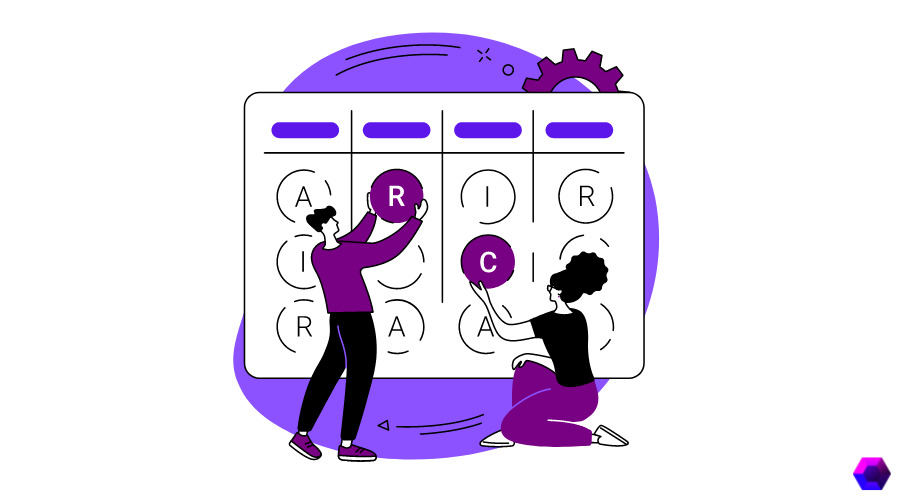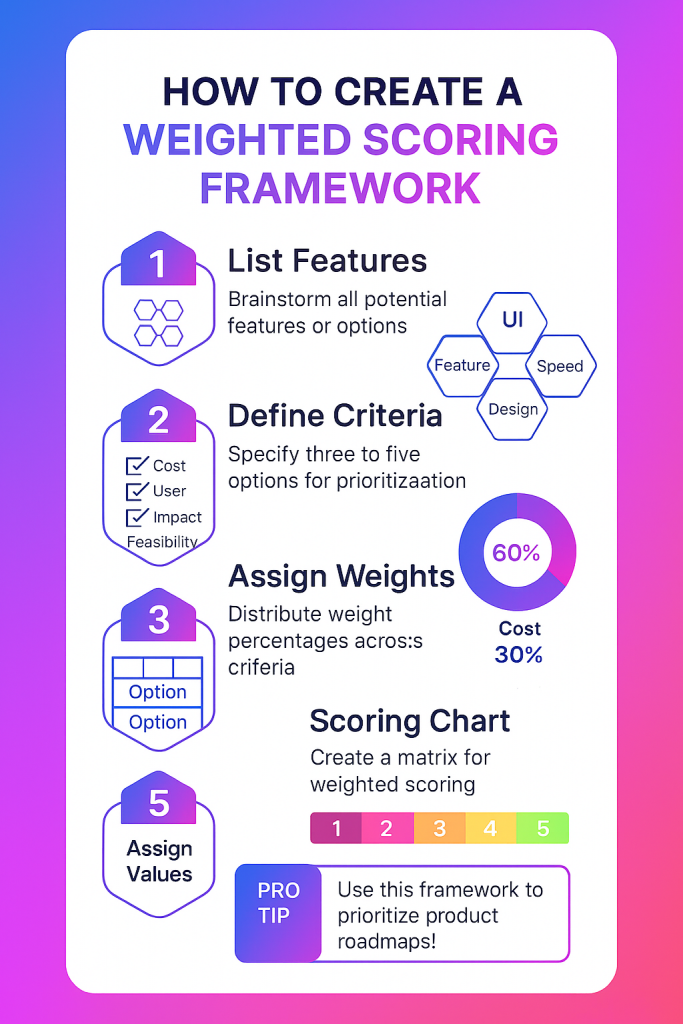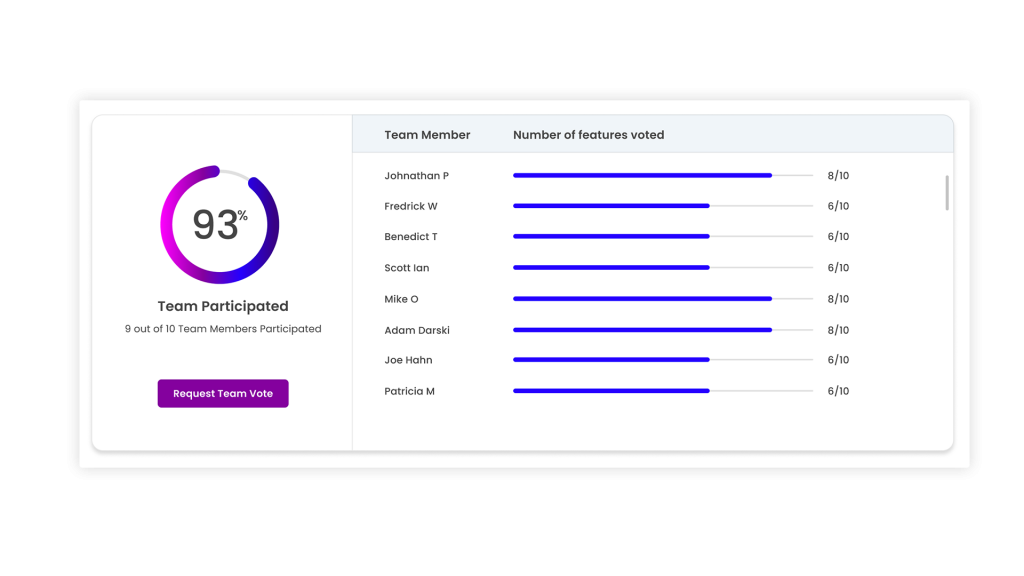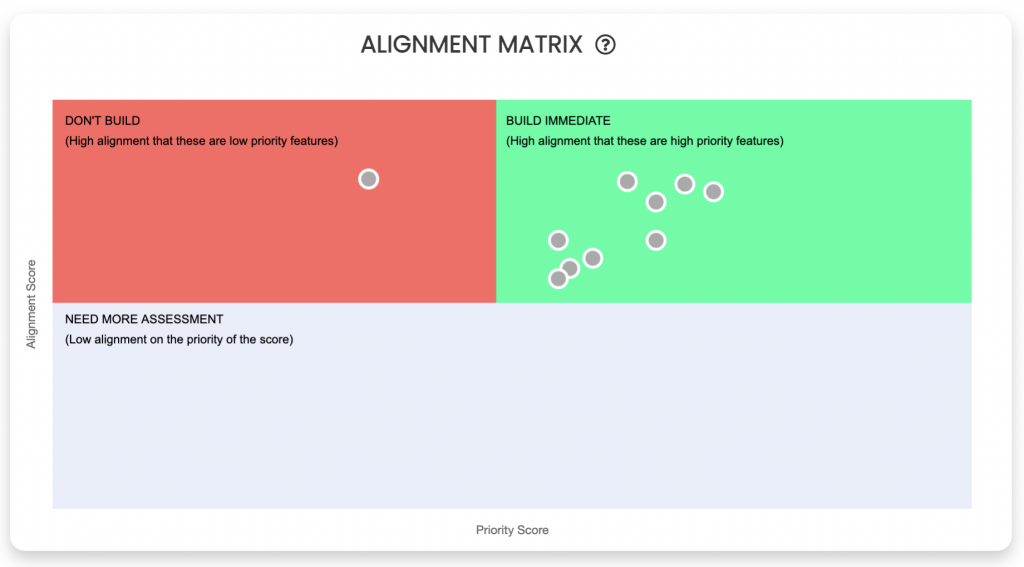
Table of contents:-
- What Is Weighted Scoring?
- What Is the Origin of the Weighted Scoring Model?
- How To Create a Weighted Scoring Framework?
- How To Create a Weighted Scoring Model in Excel?
- What Are the Weighted Scoring Model Criteria?
- How Is the Weighted Scoring Model Used?
- How To Calculate the Weighted Score?
- How To Analyze the Weighted Scoring Results?
- Benefits of Using the Weighted Scoring Framework
What Is Weighted Scoring?
Weighted Scoring Model Definition
“The weighted scoring model or the decision matrix can help them prioritize tasks using a weighted score. This weighted score value is then assigned to each task and compared with cost and benefit analysis.”
Weighted Scoring is a model used to prioritize the actions, tasks, decisions, features, and other initiatives by assigning a numerical value based on the cost advantage or the effort value of the particular activity.
It is a method used by product managers to draw the layout for the product roadmap by giving numbers or points of priority to essential and urgent activities.
Chisel is a primary app for product managers to create product roadmaps, build team alignment and collect customer feedback.
Sign up today to get all the benefits of using the product management tool in one package!
Through this method, you can determine all elements of the product roadmap based on their importance and priority.
Business decision-making is a challenging and crucial task involving big teams, data sets, user stories, complex features and budgets, and the large impact of any action or decision.
Therefore to make it rational and easy for the executives, a model of numerical scoring against return benefits is devised.
What Is the Origin of the Weighted Scoring Model?
The weighted scoring model originates from the multiple criteria decision making (MCDM) mathematical model in 1979, developed by Stanley Zionts.
In MCDM, the objective was decision-making when multiple criteria are at work. Thus the benefits of each of the decisions were compared based on various criteria and ranked.
How To Create a Weighted Scoring Framework?
Create a List of Features
Make a list of the options regarding a particular product aspect that you want to include in the product or project roadmaps. It could be a list of product features to be designed and delivered or any outstanding tasks.
An ideal product management system like Chisel helps you list all the product features in a blink of an eye. Additionally, you may manage, organize, and evaluate which product features require your immediate attention and seamlessly work on them.
Define Criteria
Define the specific criteria on which you will weigh the options. The focus lies on cost, ROI, risk, time, and effort required in acting. Which factors would be prioritized depends on the product or project, though cost benefits or ROI are the most important.
Determine the Weights for Criteria
Set weight values for each of the criteria. Usually, the weight is a percentage. Note that these criteria hold different levels of urgency or importance for a given product, and we want to compare.
Prepare Scoring Chart for Weights
Make the weighted scoring chart. This chart has the data of scores of all the options -actions, features, or other steps based on the criteria considered, all arranged in rows and columns. It clearly expresses which tasks are more important and beneficial and is required to be performed at the moment.
Assign Values to Tasks
You have assigned the weights (in percentage) for the criteria’s importance. Now set a value between 0-5 or 0-10 to the relative tasks (options) concerning all the requirements.
Suppose your task is to design a feature, and the criteria for prioritization include time, ROI, and cost incurred. In that case, you will have to determine the score for the feature relative to all these criteria. Multiply the relative task score with the individual criteria score. The value you get will be used for making the priority list.

How To Create a Weighted Scoring Model in Excel?
You can use the following steps to create a weighted scoring model in excel:
- First, you will need to calculate the sum product from the formulas tab.
- Now calculate the SUM.
- Step three will require you to combine both the SUMPRODUCT and the SUM scores to get the weighted score.
To understand how to calculate the weighted score better, watch a youtube video on the weighted scoring model.
What Are the Weighted Scoring Model Criteria?
Following are the three weighted scoring model criteria.
As we have seen before, a weighted scoring model is a structured model that helps select options based on criteria from the pool of options available.
For example, if you want to find a vendor from the three options available to you. In making this decision, you will look at the three criteria:
- Price(40%)
- Reputation with the vendors based on the previous performance(30%)
- You wish to work with vendors who will work with you on sustainability factors as well(30%)
Now you will base your decision on these criteria. And put a score in front of them to help you with the decision.
This way, you can define criteria for your projects and then calculate the weighted score with the help of a weighted scoring model.
How Is the Weighted Scoring Model Used?
Product managers mostly use the weighted scoring model, but you can also use it for multiple other purposes.
Suppose a company is looking for a production unit and has multiple options. They will create a set of criteria such as benefits and cost and give them scores to get better equipment.
Some criteria will be more critical for the company than the others. Therefore they will weigh those criteria at a higher level while scoring them.
Another area of use of weighted scores is in the tests conducted by schools.
The teachers who think that the comprehensions are more critical than the dictation tests will give more significance to the overall grade the understanding.
And since the comprehension tests have a weighted average, students will prepare for those exams than the dictation ones.
How To Calculate the Weighted Score?
Let’s see how to calculate the weighted score by following the calculation steps with an example.
Suppose you have to calculate the weighted score for the time you spent exercising four days per week for a month. Your data is the time spent every day you exercised, and the weight will be the total number of days you exercised.
Two days no exercise, three days for 45 mins, four days for 15 minutes, seven days for 20 minutes.
Now that you have determined the weights for every number, it’s time to total them.
2+3+4+7= 16
Now, multiply every number with its corresponding weight.
2(0)=0
45(3)=135
15(4)= 60
20(7)=140
Total= 335
Finally, put the respective scopes into the formula to get the weighted score.
The weighted scoring model formula is a total of variables (weight) /total of all weights = weighted score.
335/16= 20.9 (this is your weighted score that shows the time you gave for exercising for that month)
How To Analyze the Weighted Scoring Results?
The weighted scoring model can be an essential factor in determining the value a particular project holds at a given time. The focus of the business may change in the future, but currency and the weighted score show the critical tasks.
The weighted scoring model analysis helps product teams know the weight of one item over the other. If building a webshop, adding a cart, and gaining users are the two items.
But when you calculate the weighted score and one ranks at the top than the other, you will give that item preference.
This is the benefit of the weighted scoring model: it gives more information on the item and clarifies action items to the teams. The product teams can then match these items with their overall objectives.
Another way to use the weighted scoring model analysis is by grouping the items into some themes and roadmap as and when the priorities match the weighted scores.
Benefits of Using the Weighted Scoring Framework
The prime use of a weighted scoring model is to prioritize your product backlog.
Following are the weighted scoring model benefits:
- To felicitate working on meaningful and relevant tasks that will give valuable returns to the business.
- Helps teams in group decision-making.
- Supports the roadmap by sorting the outstanding tasks based on return benefits, thus helping make the project successful.
- The benefit of the weighted scoring model analysis over other frameworks used for backlog prioritization like RICE, ICE, or Kano model, is that you get to determine the criteria yourself and set the value of the importance of those criteria depending on the situation at hand.
- A weighted scoring model for comparison can also be used in the case of decision-making and resource allocation.
Prioritization, decision-making, and roadmapping are vital but also complex tasks in product management, especially when working with a big organization where huge budgets, a high number of employees, and a significant market share are involved.

With Chisel’s prioritization tools, you can work around any task- big or small. You can foster an inclusive culture by inviting participation from all team members. See exactly which team members have provided prioritization feedback on which features.

Not just that, with the Alignment matrix, you can quickly see where your team has high alignment on prioritization and where there is a widespread disagreement.
Many tools and methods are helpful in the assessment of the value of any task or action. It depends on the nature of the problem, the project’s goals, and the organizational structure that determines which method shall be applicable.
Weighted scoring is one method or tool where you compare the beneficial impact of all the actions or activities included in the project roadmap. This helps in prioritizing the most urgent tasks ahead of the other tasks.
The weighted scoring method yields refined results as the actions are assessed on all the relevant and critical criteria, such as the cost benefits, time consumed, capital consumed, ROI, and other crucial aspects of the situation.
The model is time-dependent. This is because the relevance of criteria that weigh the action’s priority varies with time or, we should say, market situations. There could be situations in which cost and capital are of utmost importance, and on other occasions, time could be the most critical factor in weighing the priorities.
FAQs
A weighted score is derived from the weighted scoring model formula. This numerical value score ranks your tasks and initiatives with benefit and cost categories. This way, product teams are better able to prioritize their tasks.
The weighted scoring framework is a method used in project management to compare the competitive advantage of activities in the project roadmap for prioritization. Activities can be such as purchase decisions, feature development, etc. In this framework, the actions are directly weighted against the return benefits and compared for prioritization.
The significant advantages of using a weighted scoring model are that it ensures that the workflow is managed to yield positive outcomes and not miss out on situational opportunities. The core aim is prioritization through the comparison of benefits. Therefore, it helps in decision-making and project roadmap formation. The weighted scoring model weighs the cost benefits of actions and thus helps better allocate resources for projects.
